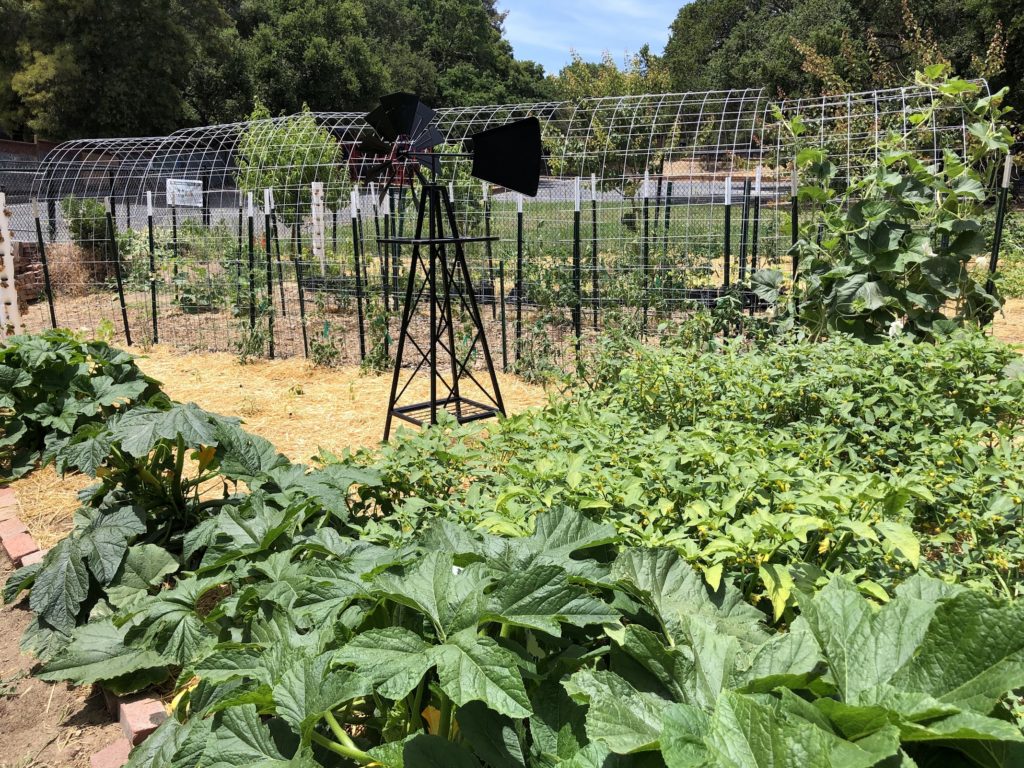Written by Taylor Mogavero, Program Coordinator
Our goal at Each Green Corner is to increase food security in our community. Since the COVID-19 pandemic, food insecurity in the Bay Area has increased to 33%, meaning 1 out of every 3 people are not getting enough food. But this isn’t just a problem in the Bay Area, food security is a major global issue. It is a basic human right to have access to food, yet so many lack adequate daily calorie intake. Not only do millions of people lack access to food, it’s getting worse every year. Within the 79 countries that it works, the World Food Programme estimates that more than 345 million people face high levels of food insecurity in 2023, more than double the number in 2020. Reasons for this increase include many factors, including conflict and an increasing human population, but the culprit that may have the largest and most unpredictable effect, is climate change.
Before we dive into how climate change increases food insecurity, let’s define the two concepts.
What is food security?
Food security refers to the state in which all people, at all times, have physical, social, and economic access to sufficient, safe, and nutritious food that meets their dietary needs and preferences for an active and healthy life. It encompasses four dimensions:
- Availability: There is an adequate supply of food, both in terms of quantity and quality, through domestic production or imports.
- Accessibility: People have the ability to obtain food through their own production, purchase, or other means. It involves factors such as affordability, distribution, transportation, and market access.
- Utilization: Food is utilized effectively, ensuring it is safe, nutritious, and culturally appropriate. This dimension involves practices such as proper food preparation, storage, and dietary diversity.
- Stability: Food security is consistent over time, without sudden disruptions or shocks that jeopardize access to food.
What is climate change?
Climate change refers to long-term shifts and alterations in Earth’s climate patterns, including temperature, precipitation, wind patterns, and other elements of the climate system. It is primarily caused by human activities, particularly the emission of greenhouse gases (GHGs) into the atmosphere.
The Earth’s climate has naturally fluctuated throughout history due to various factors such as volcanic eruptions, solar radiation, and natural variations in the Earth’s orbit. However, the current climate change phenomenon is largely driven by human-induced factors, especially the burning of fossil fuels (coal, oil, and natural gas), deforestation, industrial processes, and agricultural activities.
These human activities release significant amounts of GHGs, such as carbon dioxide (CO2), methane (CH4), and nitrous oxide (N2O), into the atmosphere. These gases act like a blanket, trapping heat and causing the Earth’s temperature to rise, resulting in what is commonly known as global warming. The increased concentration of GHGs in the atmosphere intensifies the natural greenhouse effect and leads to changes in the Earth’s climate system.
Now that we have a good grasp on these concepts, let’s discuss the several ways that climate change affects food security.
How climate change affects food security
- Decreased crop yields: Climate change leads to changes in temperature, precipitation patterns, and extreme weather events that can reduce crop yields. Heatwaves, droughts, floods, and storms can damage crops, leading to lower agricultural productivity. This can result in food shortages, price increases, and reduced access to a diverse range of nutritious foods.
- Shifts in agricultural regions: Changing climatic conditions can impact the suitability of regions for specific crops. Some areas may become less conducive to agriculture due to water scarcity, increased heat, or soil degradation. Conversely, other regions may experience more favorable conditions. However, shifting agricultural regions can disrupt established farming practices, infrastructure, and access to markets, affecting local food production and availability.
- Changes in water availability: Climate change alters precipitation patterns, leading to water scarcity or excessive rainfall. Reduced water availability can limit irrigation for crops, resulting in reduced yields and food production. Inadequate water supplies also affect livestock and fisheries, further impacting food security.
- Increased frequency and intensity of extreme weather events: Climate change contributes to more frequent and intense extreme weather events such as hurricanes, cyclones, floods, and droughts. These events can destroy crops, damage infrastructure, disrupt transportation and trade routes, and lead to the loss of food reserves. They also increase the vulnerability of farming communities, particularly in low-income regions, to food insecurity.
- Loss of biodiversity and ecosystem services: Climate change poses a threat to biodiversity, including plants, animals, and insects that play crucial roles in pollination, pest control, and maintaining healthy ecosystems. The decline in pollinators, such as bees, can hinder the reproduction of many food crops. Changes in ecosystems can also impact the availability of wild foods and traditional food sources for indigenous communities.
- Food safety and quality: Climate change can increase the risk of food contamination and foodborne illnesses. Rising temperatures can facilitate the growth of pathogens and increase the prevalence of pests and diseases in crops and livestock. Extreme weather events can damage food storage and transportation infrastructure, leading to post-harvest losses and compromised food safety.
- Impacts on fisheries and coastal communities: Climate change affects marine ecosystems, leading to shifts in the distribution and abundance of fish populations. Rising ocean temperatures, ocean acidification, and coral bleaching can harm coral reefs and impact the productivity of fisheries. Coastal communities that rely heavily on fishing as a food source and livelihood face increased food insecurity due to declining fish stocks.
- Disruption of food systems and supply chains: Climate change can disrupt food systems and supply chains, affecting food distribution and access. Extreme weather events can damage transportation infrastructure, storage facilities, and markets. Disruptions in trade routes and increased food prices due to climate-related factors can limit access to food, particularly for vulnerable populations.
To address climate change’s impact on food security, adaptation and mitigation strategies are crucial. These include promoting climate-resilient agricultural practices, improving water management, investing in climate-smart technologies, diversifying food sources, enhancing social safety nets, supporting small-scale farmers, and reducing greenhouse gas emissions to mitigate further climate change effects. International cooperation, policy interventions, and community-level initiatives are necessary to ensure sustainable and equitable food systems in the face of climate change.
Though we are small, Each Green Corner aims to create a resilient food system that provides adequate food availability to all. Through urban agriculture, we reduce the need for commercial farming, which is damaging to our environment and exacerbates climate change. Urban gardens can reduce urban heating, retain water that would otherwise run off into the sewers, and improve air quality. Having food grow close to those who will eat it reduces the need for transportation, hence decreasing GHG emissions. On top of all of that, all of our gardens use only certified organic materials and we never use pesticides. We hope to encourage others to follow our footsteps and embrace sustainable gardening and farming techniques so we can build a food system that is resilient to climate change, while also mitigating the issue, and provide food access to everyone.

Sources:
IPCC, Chapter 5: Food Security
The World Bank, What You Need to Know About Food Security and Climate Change
United Nations, Global Issues: Food
USDA, Climate Change, Global Food Security, and the U.S. Food System



0 Comments